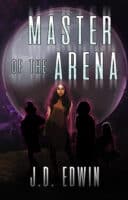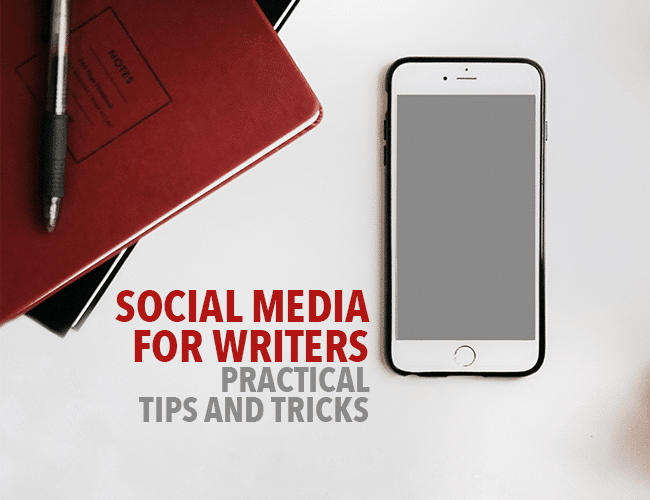The article Social Media for Writers: Practical Tips and Tricks appeared first on The Write Practice.
Social media is prevalent these days. Whether you love it or hate it, social platforms have become an essential marketing tool—not just for companies and businesses, but for authors and artists as well. Being a creator means getting your content out there to a target audience, and one of the best ways is through social media channels if you want to reach your readers directly. Here’s some practical advice on social media for writers.
But social media can be overwhelming, especially if you’re only focused on book sales (hint: focus on more than sales). Which platform for authors is best? What’s the best way to use them? Why do social media posts that work on one site not work on the others? Just how large a social media presence do you need anyway?
Luckily, it’s actually much easier than you might think, especially if you focus on the social aspect of social media sites. Let’s take a look at the best ways for an author to use four of the biggest social media platforms: Facebook, Twitter, Instagram, and Pinterest.
Facebook is a space with a variety of ways to engage. People post all kinds of media: short and long form text, links, images and visual content, videos, and more. You can join groups or follow pages, as well as friend people directly.
Best Approach
The best way to use Facebook as an author is by creating a Facebook Page. Make an author page (also called a business page), not a personal page, which relies on people becoming “friends” with you to connect, and not a Facebook group, which puts a lot of pressure on other people to contribute to discussion.
A business page is what allows people to simply Like your page and forget about it until you post status updates. They’ll see your news and updates cross their feed often, without having to put a lot of work into it. People like it easy.
How to Post
Facebook pages should post two to four times a week. Try to keep posts short and simple, and include a relevant image or link, such as to your blog post or a relevant article, or a relatable image. Posts with images or visual content are more likely to be noticed, but make sure it’s relevant to your subject matter.
Avoid sharing generic “feel-good” posts that make your viewers feel like you’re a spammer.
How to Connect
This is a tricky one with Facebook, but very useful if you get the hang of it. Your business page can act like an alter ego for you as you interact across Facebook. You can “Like as Page” or “Post as Page.” This will let people see you comment or like pages as your page instead of your name.
For example, a comment can be posted as from “Joe Smith—Author,” instead of “Joe Smith.” This will help you build brand awareness and get your identify as author in front of more people.
Twitter centers on short text posts. You can share a variety of media on Twitter as well, but the central constraint of Twitter is the 280 character limit per post.
Best Approach
Create a dedicated Twitter account for you as an author. Write a short, interesting author bio. If you have a default photo you use as your “author photo,” it’s best to use it as your profile picture.
Be clean, be precise, be professional. You can also check out Sarah Gribble’s Twitter Starter Pack here with more detailed advice.
How to Post
Due to the short nature of tweets, they should be posted more frequently, once or twice a day. Once in the morning and once in the evening is a good way to start.
Try to keep posts relevant and concise. People who follow Twitter want to know what’s going on in your head, so a little stream of consciousness as you think about your projects would make for interesting tweets.
The lower right corner of each of your tweets has a button shaped like a bar graph. It will show you how many people saw your tweet and how many interacted with it.
How to Connect
Unlike Facebook, re-tweeting is OK on twitter. But make sure you are only re-tweeting things relevant to your writing. Don’t spam and don’t click-bait. Re-tweet from fellow writers you follow and want to connect with.
Engage in conversations if someone engages you through a tweet chain, but always stay on topic.
Rather than text, Instagram emphasizes visual content. Each post focuses on one or more photos or videos. There’s also space for expansive text, but the images take center stage on this social network.
Best Approach
Instagram is very visually based. While it’s usually the favored site for artists instead of authors, it still has its advantages.
The important thing about Instagram is to be visually consistent in color and content. Make sure your photos are of a similar color scheme and composition, and consider investing in good camera equipment and learning Photoshop for photo editing.
Let your captions reflect your writing style and think about how your audience will interact with your Instagram content.
How to Post
It’s best to post daily or at least five times a week on Instagram. Since the feed is linear, this will maximize your chances of being seen by your followers.
How to Connect
Hashtags are important on Instagram. Tag your pictures with tags that are linked to trends relevant to your content.
Do not be greedy and overuse tags. Look at the accounts you like and want to emulate and see what kind of tags they’re using for reference.
Research other traditionally published authors, indie-authors, and bookstagrammers who regularly post about books to see what kind of social media content users enjoy.
Pinterest also emphasizes images, but unlike Instagram, which does not allow links in posts, every Pinterest post is a link. It’s a way to organize bookmarked pages visually.
Best Approach
Pinterest is a unique one and there’s a trick to it. Did you know that the site categorizes pins based on other pins they’re collected with? A pin that’s always collected on boards full of recipes is probably a recipe. A pin usually collected on boards with oil paintings is probably related to oil painting.
So if you have a piece of writing you’d like to get pushed to people with similar interests, create a board, pin your piece along with a few dozen other similar pieces, and your pin will be pushed to people interested in your type of writing.
How to Post
There’s no hard and fast rule for Pinterest, but staying active and updating your board regularly is a good idea.
How to Connect
Follow others with similar interest and actively create new pins. Growing a Pinterest following takes time and is a more passive activity than the others.
Tools for Genuine Connection
Social media for writers can be truly daunting when you go into it blind, but in reality, it’s much simpler than it looks. Just like your writing, if you stay consistent, stay genuine, and avoid fluff and spam, you will reap its rewards over time.
Don’t be afraid to expand your online presence a little at a time to see which social media accounts you actually enjoy most. Try different types of social posts, questions, and polls.
And above all, treat others like you would want to be treated in actual life. From a business standpoint, your social media profiles and posts represent you and your writing pieces, so shine in the most professional way you can.
Do you have other tips or other favorite social media platforms? Share them in the comments!
 Master of the Arena, the prequel to J. D. Edwin’s Headspace, is here!
Master of the Arena, the prequel to J. D. Edwin’s Headspace, is here!You saw Astra fight for her life—and the fate of the world—in Headspace‘s alien arena. Now, discover the story behind the master who pulls the strings and designs each deadly trial.Order your copy of Master of the Arena today!Get Master of the Arena
PRACTICE
Social media is a useful way to promote your stories. But what if it were a storytelling tool as well?
For today’s practice, tell a story in Twitter form. Write a series of tweets (remember, maximum 280 characters) with a story arc. It could be a true story of something that happened to you, or a fictional tale.
Take fifteen minutes to write. When you’re done, share your series of tweets in the practice box below and then offer feedback to other writers. If you’re truly brave, post them on Twitter!
Enter your practice here:
The article Social Media for Writers: Practical Tips and Tricks appeared first on The Write Practice. The Write Practice – The Online Writing Workbook
Go to Source
Author: J. D. Edwin
